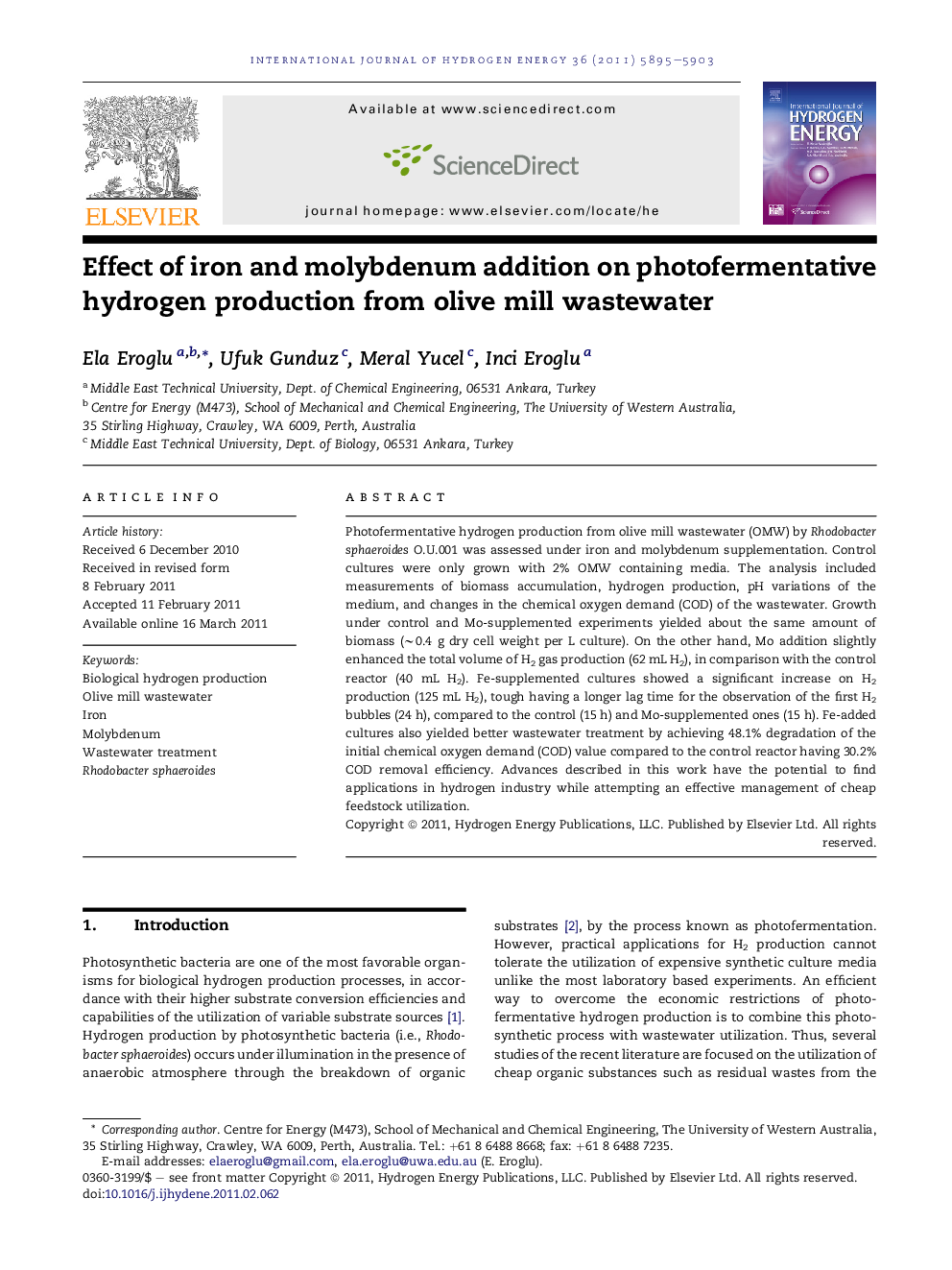| Article ID | Journal | Published Year | Pages | File Type |
|---|---|---|---|---|
| 1279519 | International Journal of Hydrogen Energy | 2011 | 9 Pages |
Abstract
Photofermentative hydrogen production from olive mill wastewater (OMW) by Rhodobacter sphaeroides O.U.001 was assessed under iron and molybdenum supplementation. Control cultures were only grown with 2% OMW containing media. The analysis included measurements of biomass accumulation, hydrogen production, pH variations of the medium, and changes in the chemical oxygen demand (COD) of the wastewater. Growth under control and Mo-supplemented experiments yielded about the same amount of biomass (â¼0.4 g dry cell weight per L culture). On the other hand, Mo addition slightly enhanced the total volume of H2 gas production (62 mL H2), in comparison with the control reactor (40 mL H2). Fe-supplemented cultures showed a significant increase on H2 production (125 mL H2), tough having a longer lag time for the observation of the first H2 bubbles (24 h), compared to the control (15 h) and Mo-supplemented ones (15 h). Fe-added cultures also yielded better wastewater treatment by achieving 48.1% degradation of the initial chemical oxygen demand (COD) value compared to the control reactor having 30.2% COD removal efficiency. Advances described in this work have the potential to find applications in hydrogen industry while attempting an effective management of cheap feedstock utilization.
Keywords
Related Topics
Physical Sciences and Engineering
Chemistry
Electrochemistry
Authors
Ela Eroglu, Ufuk Gunduz, Meral Yucel, Inci Eroglu,
